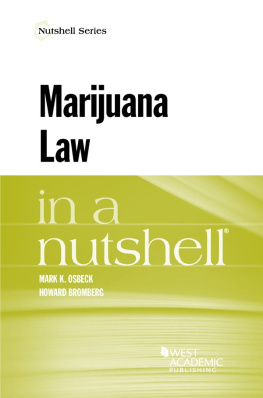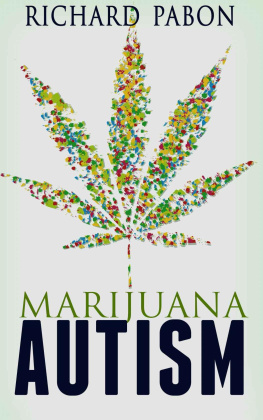Hachette Book Group supports the right to free expression and the value of copyright. The purpose of copyright is to encourage writers and artists to produce the creative works that enrich our culture.
The scanning, uploading, and distribution of this book without permission is a theft of the authors intellectual property. If you would like permission to use material from the book (other than for review purposes), please contact permissions@hbgusa.com. Thank you for your support of the authors rights.
Published by Basic Books, an imprint of Perseus Books, LLC, a subsidiary of Hachette Book Group, Inc.
The Hachette Speakers Bureau provides a wide range of authors for speaking events. To find out more, go to www.hachettespeakersbureau.com or call (866) 376-6591.
The publisher is not responsible for websites (or their content) that are not owned by the publisher.
To Herr Professor Leo P. Ribuffo, EBD pre, and my beloved HDMs 4 and 5.
Thank you, always, for your support.
THE HISTORY OF marijuana in America is, to quote its chroniclers the Grateful Dead, a long, strange trip, involving tens of thousands of ordinary individuals who, along with corporations, federal officials, presidents, and first ladies, felt a personal stake in determining the future of pot. They are people who found a higher calling in the battle over marijuana rights in Americaindividuals whose dedication was so complete that they crafted careers out of fighting for or against the drug. But even for those who joined the movement for only a short time, marijuana, and the threat or promise it contains, has long been a powerful motivator, inspiring thousands of activists over the past fifty years to form into two opposing camps, either supporting or denouncing the use of the drug. These activists have worked for years to convince Americans that their view of marijuana is correct, and theyve sought to counteract each otheras well as the dominant view of the drug at the timeby organizing political protests, national movements, large-scale conferences, and voting campaigns. This is the surprising power of marijuana: not since the battle over the federal prohibition of alcohol has a drug pushed so many to take action, and no other intoxicant in American history has inspired so many people to take to the streets.
But Prohibition ended in 1933 with alcohols legality enshrined in a constitutional amendment, and few have questioned its legal status since. Marijuana is a different story. Through powerful arguments and even more powerful campaigns, grassroots activists and their supporters have transformed the reputationand legal statusof marijuana three times, moving it from legality to illegality and back again. First pro-marijuana activists were responsible for launching the nations first drive to decriminalize personal marijuana use in the 1970s, when they succeeded in making possession a civil misdemeanor in a dozen states. In response, concerned parents launched a booming anti-marijuana counterrevolution that demonized, and then outlawed, marijuana in the 1980s, reversing the earlier decriminalization trend. Now, todays current push for legalization is driven once again by pro-marijuana activists who are inspired by both the drugs medical utility and a concern for social justice and civil rights. Arguing that marijuana prohibition does more harm than good, modern activists have launched one of the most successful grassroots legalization efforts of all time: twenty-eight states now allow residents to use medical marijuana, while eight states and the District of Columbia have legalized recreational weed.
This history is what makes marijuana unique. Unlike cocaine and LSD, only marijuana has had the distinct ability to move back and forth at the state and local levelsbetween legality and illegality, acceptance and condemnationwhile always remaining federally illegal. And the drugs rise, fall, and resurrection would have been impossible without the participation of thousands of grassroots activists, many of them everyday people who, over the past fifty years, have continually pushed the use of the drug into new realms.
Of course, marijuana use in America goes back much further than fifty years; it was only in the past five decades that grassroots activists made marijuana their cause. The culture that surrounds the drug stretches back to before the countrys beginnings as an independent nation. Hempfiber made from the cannabis plants stalkis one of the strongest and most durable materials in nature, and it was used throughout early American history to manufacture, among other things, cloth, twine, rope, paper, and sails. In 1619, all Jamestown colonists were required by law to grow and maintain hemp, and George Washington, Thomas Jefferson, and Benjamin Franklin grew the plant on their plantations and farms for domestic use.
By the late 1800s, the drug had come to prominence as a useful and widely available medicine and was popular in pain-relieving tinctures sold in local pharmacies. Cannabis was believed to be so safe that the
Despite its popularity, however, marijuanas role in American medicine was short-lived. With the forces of Progressivism rallying around ideals of sobriety and the tide of Prohibition rising, Treasury Department officials lobbied to have marijuana added to the drugs covered by the Harrison Narcotics Tax Act, passed in December 1914. The actsponsored by Representative Francis Burton Harrison of New York and one of the first federal drug control lawsdidnt explicitly outlaw marijuana, but rather regulated and taxed the production, importation, and distribution of opiates and coca products. After the Harrison Act, along with the 1906 Pure Food and Drug Act, required drug producers to honestly label the contents of their tinctures, cannabis-based medicines slowly were either banned or replaced. Smokable marijuana didnt qualify as a narcotic, however, and remained in legal limbo until 1937, when the Marijuana Tax Act made the possession or transfer of cannabis illegal, while allowing states to enforce their own marijuana laws and to tax hemp and marijuana cultivation and distribution.
Once effectively outlawed, marijuana took on a second life. Recreational marijuana smoking had been introduced to Americans in the late 1800s by Mexican refugees fleeing the dictatorship of President Porfirio Daz; as it slowly spread north from the border, the drug grew controversial, primarily because of the people associated with its use. A 1917 report from the Treasury Department noted that in Texas, only Mexicans and sometimes Negroes and lower class whites smoked marijuana for pleasure and warned that drug-crazed minorities could harm or assault upper-class white womenby far the reports chief concern.instance, films like Reefer Madness, released in 1936, associated marijuana use with murder, miscegenation, and suicide as it showed the transformation of a group of otherwise upstanding young white people into a laughing cabal of maddened criminals.
Even with the drugs stigmatized reputation, however, marijuana use spread across the country over the next few decades, and its popularity continued to grow. It was the subject of increased debate in the 1930s, when Harry Anslinger took control of the newly founded Federal Bureau of Narcotics and launched a campaign against marijuana that would last the rest of his thirty-two-year career. It was Anslinger, angered by the lack of federal action against the drug, who lobbied for the passage of the Marijuana Tax Act of 1937. He also published a series of anti-pot articles in









